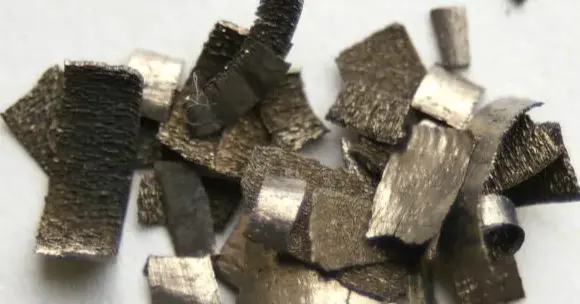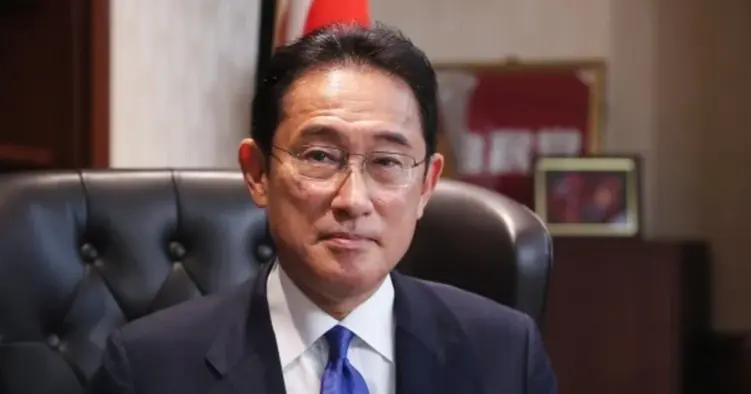Medical training in Samoa - Part 2
The medical training is long and hard. Those who desire to do medicine must have the passion, determination and commitment to study the long hours and synthesize tons of materials of the medical course.
The NUS SOM’s medical degree is an undergraduate medical degree, called Bachelor of Medicine and Bachelor of Surgery (MBBS). The MBBS course is a 6-year degree, ending up with two (2) Bachelors back-to-back. In any university system, a Bachelor’s degree is usually 3 years long, while a Diploma is a 2-year training, and a Certificate is a 1-year training.
If you have a Bachelor of Arts (BA) or Bachelor of Science (BSc), these are usually of 3-year durations. A Master's degree follows this, and it is usually 2 years of training. A PhD (or doctor of philosophy) following this, will take about 4 years. The PhD is top of the research ladder in any university. If one progresses from a degree of Bachelor (3 years) to a Master (2 years) to a PhD (4 years), it will take about 9 years.
I have done 16 years of supervised medical education studies (6 years medical school + 10 years’ post-graduate training) in New Zealand to get to the top of the medical ladder of getting the Fellow (FRACP) qualification, which is a post-graduate diplomate consisting of many written and oral exams (with tough supervision), plus research and publications, plus practical work (learning many techniques of management) of saving and treating lives and improving prognosis of patients with research.
In New Zealand and Australia, without the post-graduate qualification of Fellow (FRACP, FRACS, FRACOG, etc) by examination, one will not be able to work as a Specialist there. In the FRACP exams, New Zealand and Australia only take the top 10-20% of those who pass the various exams. These numbers will vary from year to year, but the idea is to keep the top people as specialists. Many of the doctors I sat these exams with have tried 4 to 5 times.
Many of our local doctors who went to NZ and Australia and have tried the Fellow exams (in Internal Medicine & its disciplines like Cardiology, Endocrinology, etc, Surgery, Paediatrics, Obs & Gynae, etc) were unsuccessful, as the exams and requirements are quite hard, but, not impossible. Life is halted for the next 9-10 years while one tries to get this qualification, as it is a long and hard journey. The saving grace for me was prayer, faith in God and persistence, as the country was waiting. I had no option and I could not come back without this qualification. The Palagis are passing it, why would not a Samoan from Samoa get it?
The amount of work needed to do to cover a university course is given by “credit points”. Credit points are a basic measure of study load. The workload specified by the credit point value of a course applies regardless of the length of the course (year, trimester, intensive teaching period), or the mode of delivery (online, on-campus or blended). The ratio used in Samoa is that one credit point usually equates to 10 nominal hours in the course. To pass a Bachelor's degree, you normally require between 230 and 240 credit points. The Masters degree needs about 300-400 credit points. The PhD has about 960 credit points. The medicine course has 800-900 credit points, and it is full of theory and practise.
There is a lot of work to cover in the medical course. A background in humanity science will help. The first 3 years of the Basic Science pre-clinical course are covered face to face in classroom lectures from Year 1 to Year 3 by the SOM lecturers. The last 3 years of clinical science are done by some of the SOM lecturers plus the medical staff of the National Hospital in all disciplines of medicine, including Internal Medicine, Surgery (general and orthopaedic), Paediatrics, Obstetrics and Gynaecology, Psychiatry, ENT, Eye, Emergency, Public Health, Laboratory, and Community Medicine.
The major final exams are held at the end of 5th year, which includes written and practical exams. The NUS SOM MBBS Course has been accredited by the Samoa Qualification Authority in 2022. We have nine (9) NUS SOM staff doing the pre-clinical teaching, and some of these staff are also involved in the clinical teaching. We also have about 10 Ministry of Health hospital medical staff involved in the clinical teachings and examinations of the 4th-6th year students.
I teach the second year (200 level) in heart (cardiovascular) disease and neurology disease and teach the fourth year (400 level) and 6th year (600 level) in Internal Medicine.
After graduation in Samoa, there is a 2-year Internship program, where the new doctors rotate through the different disciplines of medicine like Internal Medicine, Surgery, Paediatrics, Obstetrics & Gynaecology, Emergency Department, Public Health, Psychiatry, Peripheral Hospitals, and Community Medicine.
These first 2 years are tough for any new doctor, so, family support is essential. The on-call roster can be quite stressful if there are not enough members of the team. As we graduate more doctors, the workload will be shared reducing the stress levels. When one is responsible for a life, this is often quite stressful. When a patient dies in one’s hands, and the doctor is a new graduate, it is often quite difficult to forget, and it can be quite devastating emotionally. Hence doctors need to de-stress. I used to play a lot of rugby at the top level in Samoa and New Zealand and playing music to de-stress myself. Staying close to God works well in this de-stressing process.
After the 2 years of Internship, they can then choose an area to specialize in. Once they decide, they will be inserted into that department as a junior registrar for the next 2-3 years, before looking at doing post-graduate training. At the moment, the post-graduate Master of Medicine, a 4-year degree is done through the Fiji National University (FNU). The first year can be supervised in Samoa, and the last year of research can be supervised in Samoa.
The NUS School of Medicine had been discussing with the Ministry of Health regarding running and teaching the Master of Medicine in Internal Medicine and O&G under its umbrella as Samoa has the local capacity and capabilities to teach these courses. SOM is already hosting the Master of Medicine (MMed) in Surgery and Orthopaedic, and running and teaching the Master of Public Health (MPH). I used to teach the MMed in Internal Medicine at the Fiji National University.
The OUM medical degree is a postgraduate degree, called “MD”, or “Doctor of Medicine”. The students must have a Bachelor’s degree first, like BSc (Bachelor of Science), to enter the course, followed by 4.5 years of hard study. The medical course is squashed into 4 and ½ years. The first 2 years of pre-clinical study on basic science are taught online with many online lectures and tutors. The final 2.5 years of clinical rotations and research are done with hospitals and clinical tutors in the countries where the students are located. In Samoa, OUM has appointed certain Samoa MOH hospital medical staff to teach and supervise the local Samoan students and overseas students who come back to Samoa for electives. After each clinical block ranging from 8 weeks to 12 weeks, the student will sit an online exam, plus handing in a supervisory report and clinical cases writeup. For the final graduation exams, all the OUM students in Australia, New Zealand, Samoa, and American Samoa, sit the same written exam online, plus an oral exam (OSCE) in Australia. The American and Canadian students sit the United States Licensing Exams (USLME) Part 1 after the 2nd year of Basic Science, and the USLME Part 2 exam is done after they finish the clinical course, to graduate and work in the USA and Canada. OUM has over 60 staff from the USA, Australia, New Zealand, Samoa, and other countries, teaching the courses with Fellows, MD, and PhD qualifications. OUM has 21 administrative staff.
OUM was started in 2002, and I was there at the start. The whole world attacked the medical school in Samoa, and many professional colleagues including local, pacific, USA, NZ, and Australian colleagues called us “stupid”, “dump”, “are you out of your mind”, etc, because we were at the cutting edge of teaching medicine on line coupled with face-to-face clinical teaching, utilizing the various internet software and hardware to do innovative teaching of medicine, because we had to. I was personally attacked by colleagues overseas for getting involved in OUM. OUM was innovative as it cops all the nasty comments from 2002 until about 2010. The main criticism was, “How can you teach anatomy without a “cadaver”? Everyone around the world especially in the USA, New Zealand, and Australia gave us the name “computer doctors”. We managed to find great software to teach gross clinical anatomy that was much better than the textbooks or the cadaver. Now – look at where the whole world of medical education is at. OUM from small Samoa was pioneering all these methodologies.
It has been unbelievable that OUM in Samoa started a new trend of medical education in the world, delivering medical education at a distance to educate doctors all around the globe to a top quality, while utilizing their local doctors to teach their clinical students in their facilities, so to build their medical capacity. We managed to bring the best expertise from around the world to teach all the local (Samoa) and overseas students in basic science, then utilize their clinical health structures and doctors to train their future doctors utilizing OUM’s curriculum and method of study.
This is how innovative it was, and now everyone around the world is following it. After 21 years of delivering this method of medical education, the whole world has followed what started in small Samoa. We were the leader in this modern innovative idea.
The Government of Samoa had risked its reputation by setting up OUM in 2002 and had been very visionary with this, leading the way for modern and virtual medical education. The challenge now is to continue to push the envelope politically to spread this innovative model of medical education to educate more New Zealand Pacific Island doctors, Maori doctors, and Indigenous and First Nation doctors in New Zealand and Australia.
OUM model is an answer to the shortage of doctors all around the world, and every country is short of medical doctors. New Zealand is talking about setting up a 3rd medical school besides Otago and Auckland, and OUM could be this 3rd medical school, as OUM has been running these medical training modules for 21 years. OUM has many graduates working in the USA, Australia and Samoa. We have had 2 graduates from American Samoa. The proof of the quality of the OUM teaching is in the quality of the doctors who graduated through the program. Many are working in our hospitals in Samoa in all disciplines.
Both OUM and SOM plus some of the medical staff of the MOH hospital are very gifted teachers in many disciplines of medicine. The best thing about this is that, our local people are now coming through with the knowledge and the experience to educate our doctors to look after our people. I have taught medicine for 35 years, and it is pleasing to see these changes in our local medical staff.
Professor Asiata Dr. Satupaitea Viali is a Professor of Medicine at the National University School of Medicine and the Professor of Medicine and Interim Clinical Dean for the Oceania University of Medicine (OUM).











